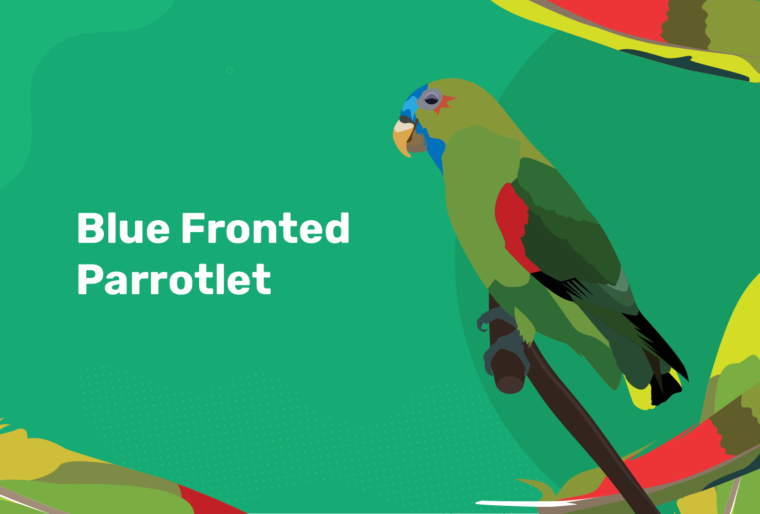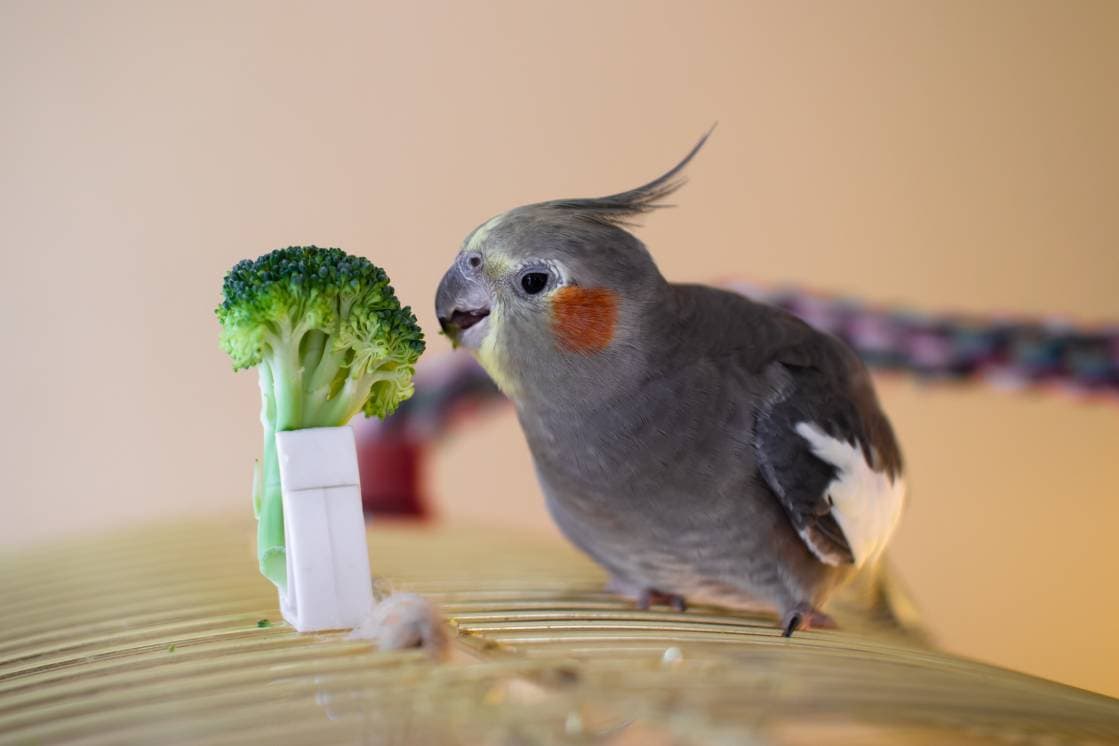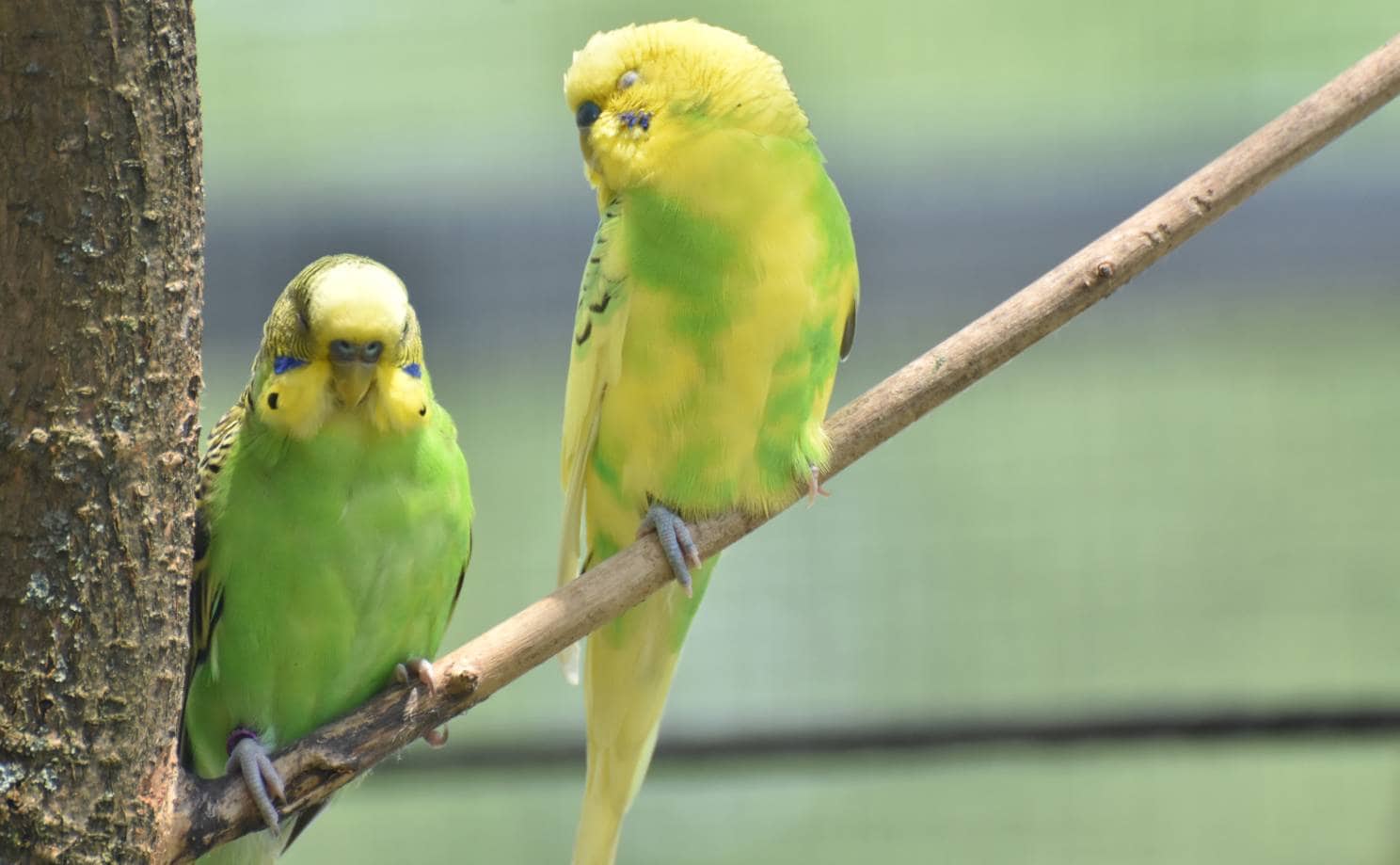
Click to Skip Ahead
The blue fronted parrotlet is a beautiful, bright bird with personality and charm. These birds are social, confident, and highly interactive creatures. They also tend to be loud. Their stout little bodies can stand up to plenty of play throughout the day, so don’t expect to see them lounging around or napping much.
They are known to be fast studies, which makes them excellent trick learners. There is much to learn about this interesting breed of parrot, whether you are interested in adopting one or not. Read on to learn all the details about the blue fronted parrotlet:
 Species Overview
Species Overview
| Common Names: | Blue fronted parrotlet |
| Scientific Name: | Touit dilectissimus |
| Adult Size: | 6-7 inches in length |
| Life Expectancy: | 20-40 years |
Origin and History
Thought to be the result of pet parrots that have escaped captivity, the blue fronted parrotlet can be found living in the wild in many different places, including Brazil, Argentina, Buenos Aires, Bolivia, and even Germany. They like to live in forests and stay together in large groups. Nobody knows when the species first came into existence, but the first written record of them was in the mid-1750s.
Temperament
These little birds are fun-loving, curious, and even funny at times. They love to spend time with other parrotlets and quickly become attached to their human family members. They enjoy “performing” for an audience, which typically consists of singing, whistling, and doing little dances. They can even learn to do tricks for treats!
They should start socializing with humans from a young age to minimize the chance that they will become reluctant to meet houseguests or spend time around kids as they get older. Blue fronted parrotlets tend to be full of energy, which makes them a favorite among families with kids who want an interactive yet easy-to-care-for pet.
Speech & Vocalizations
Not only do these birds like to talk, but they also enjoy screeching. Most will let out an excited screech first thing in the morning when the sun is just peeking up over the horizon. They also tend to screech in the evening when the sun goes to sleep for the day. They do this instinctively to let their group members know what time it is and ensure that they are all on the same page. Their screeching can last up to 10 minutes at a time, which nearby neighbors may not find as endearing as owners do.
What a blue fronted parrotlet will or will not say depends on their unique personality and the kind of training that their owners introduce to them. There are no words or sounds that are off-limits, so if there is something that an owner doesn’t want their pet bird to say, they should ensure that the word is never used around the bird, even through the television.
Blue Fronted Parrotlets Colors and Markings
These parrots have lime green feathers that stand out from just about any other color in their environment. Many have small patches of bluish turquoise near their beaks, which is what contributed to their name. However, breeding over the years has created different markings on these birds. Some have completely blue heads, while others have no marks at all.
Many also have thin yellow line-markings that stretch around their heads. A few even have patches of white on their bodies. While most blue fronted parrotlets have green shoulders, some have hints of red that illuminate in the sunlight. Specific color variations that are common in this breed include:
Caring for the Blue Fronted Parrotlet
These beautiful birds cannot spend all their time sitting alone in a cage. They require regular daily interaction with other birds and/or human companions, so those who work long hours or enjoy spending time outside of the home should not consider adopting one.
Blue fronted parrotlets want to be part of all the action, whether that means sitting on their owner’s shoulder while they watch television or helping clean up the kitchen by dragging a napkin around on the counter. They should be provided with a cage of at least 3 feet by 3 feet in size, but the larger, the better.
They can live with other parrotlets or alone and should be let out to interact with other birds and humans for at least 2 hours a day. Their habitat should include multiple types of toys and perches to play with. Any less time can result in boredom, depression, and in serious cases, self-mutilation.
Common Health Problems
Like most parrot breeds, the blue fronted parrotlet is susceptible to developing respiratory infections, so they should live in a dry, clean space, not outside where it can get damp and pollutants float through the air. These birds are also known to become nutritionally deficient due to being fed an improper diet while in captivity.
Other diseases that these birds are susceptible to include E. coli, staph, and Citrobacter. Moldy food, dirty water, humidity, and dirty cages can all create breeding grounds for these diseases. If fed too much, the blue fronted parrotlet can become obese and develop conditions that stem from obesity, such as diabetes.
Diet and Nutrition
These parrotlets eat various foods in the wild, so their diet should be carefully planned in captivity. They can easily become deficient in calcium and vitamin A when their diets are not varied enough. Commercial pellet food should make up about 75% of your blue fronted parrotlet’s diet because it is formulated with all the right nutrition necessary for good health.
Pellet food can be purchased at almost any pet store and online, making it a convenient option that requires little work on your part. The other 25% of this bird’s diet should consist of foods such as sunflower seeds (which are high in vitamin A and calcium), bell peppers, squash, spinach, carrots, and sweet potatoes. Also, clean water should be provided daily for drinking and bathing.
Exercise
Pet blue fronted parrotlets require at least 2 hours of free time outside of their habitat, where they can safely fly around and stretch their wings. This should be done indoors to keep the bird from flying away and getting lost. Human interaction should be offered during this free time for socialization and bonding reasons. While inside the habitat, your pet bird will need toys to interact with for exercise and entertainment.
Mirrors, wooden blocks, treehouses, hanging beads, and thick ropes are all awesome toy options to consider. Perches will allow your bird to fly and exercise inside their cage as well. Too much downtime leads to boredom and obesity, both of which are important to avoid because they can lead to depression and poor health as time goes on.
Where to Adopt or Buy a Blue-Fronted Parrotlet
Blue-fronted parrotlets are popular pets throughout the United States and elsewhere in the world. Therefore, you should not have a problem finding one for sale at an exotic pet store or a bird breeder’s facility. When buying from a pet store, you likely will not be able to find out exactly where the bird came from nor how well they have been taken care of.
Breeders can provide you with background information, such as the health history of the bird’s parents and the type of food and exercise that they have been provided with as a youngster. No matter where you buy your blue-fronted parrotlet from, it is important to have them checked out by a trusted veterinarian as soon as possible. This will help ensure that you know how to provide proper care based on the bird’s specific health status and nutritional needs.
 Conclusion
Conclusion
The blue-fronted parrotlet is a fun-loving, social bird that makes an awesome pet for singles, seniors, and families alike. They are talkative, they love to learn tricks, and they always liven up a friendly get-together. However, if you choose to get one of these birds as a pet, make sure you have the free time and commitment necessary to provide the bird with the love, attention, and care that they deserve.
See also:
 Species Overview
Species Overview







